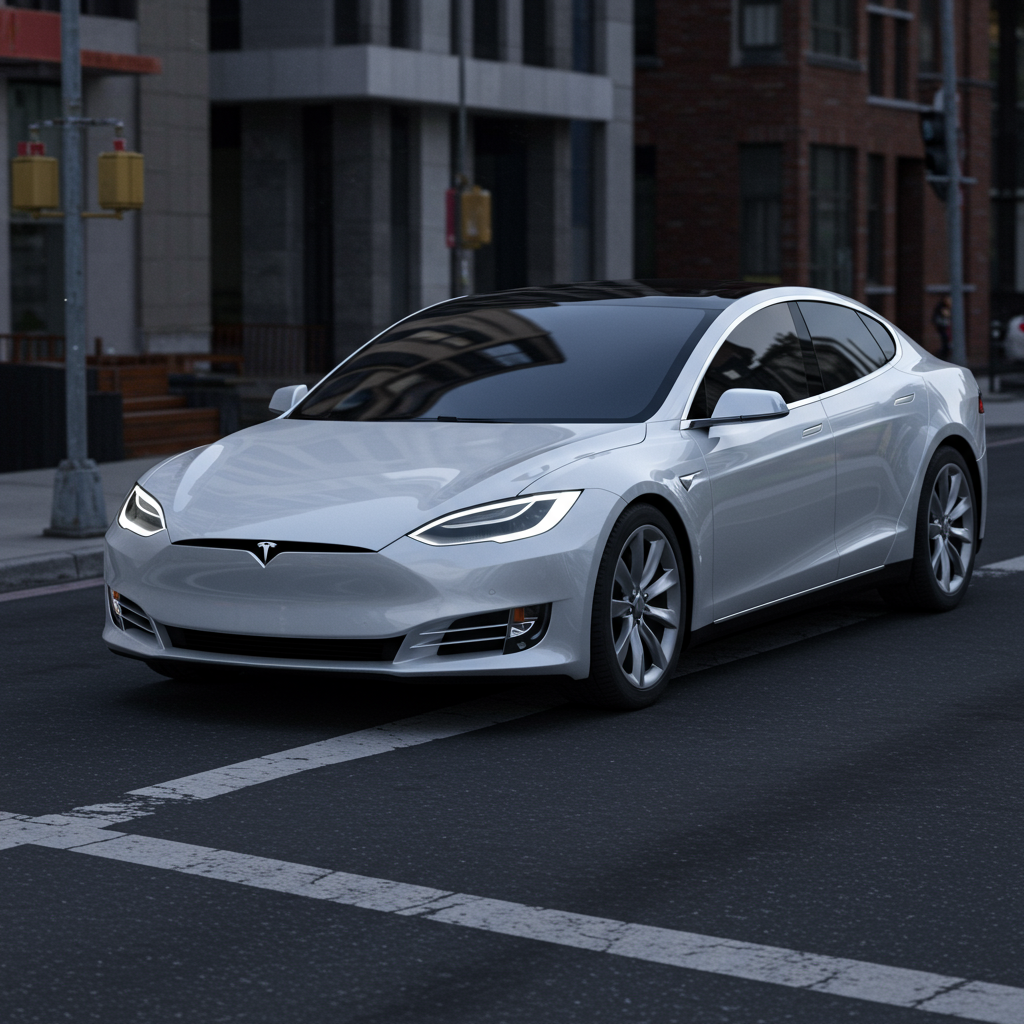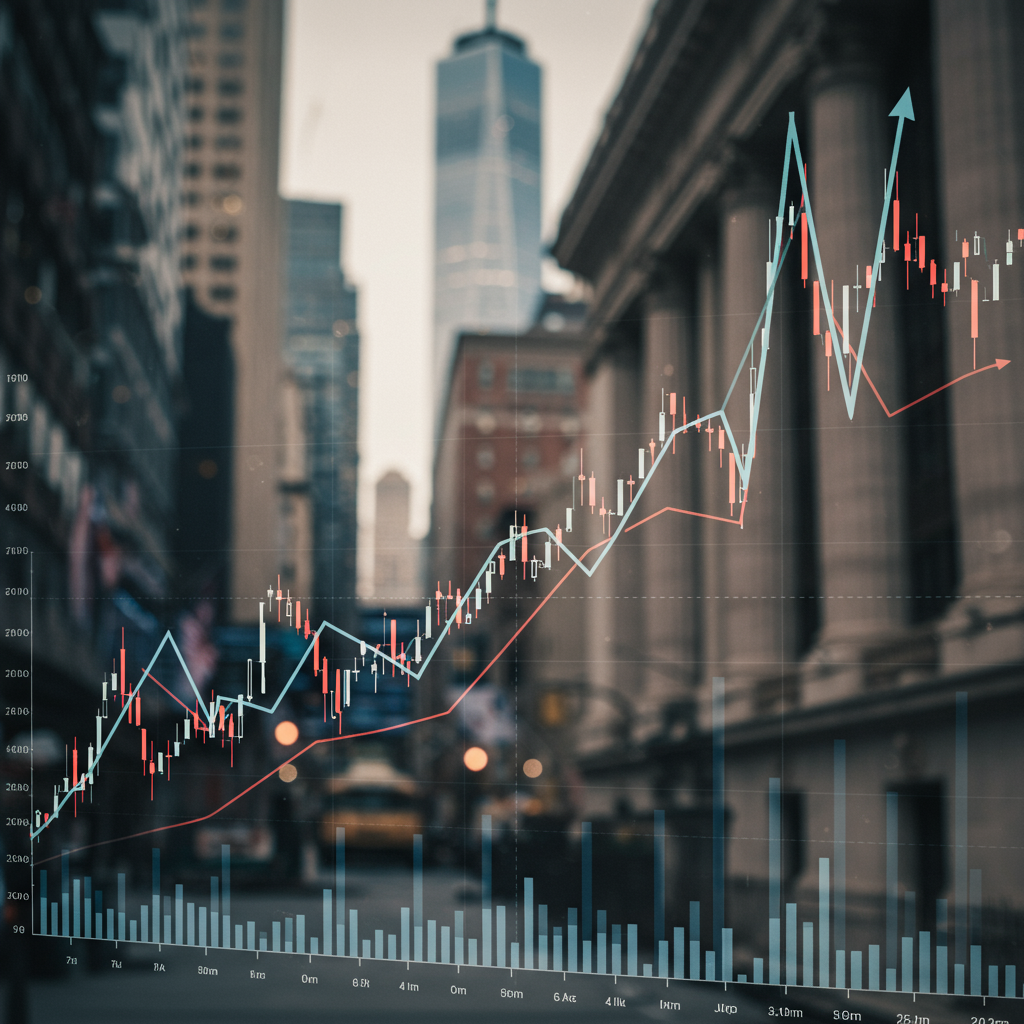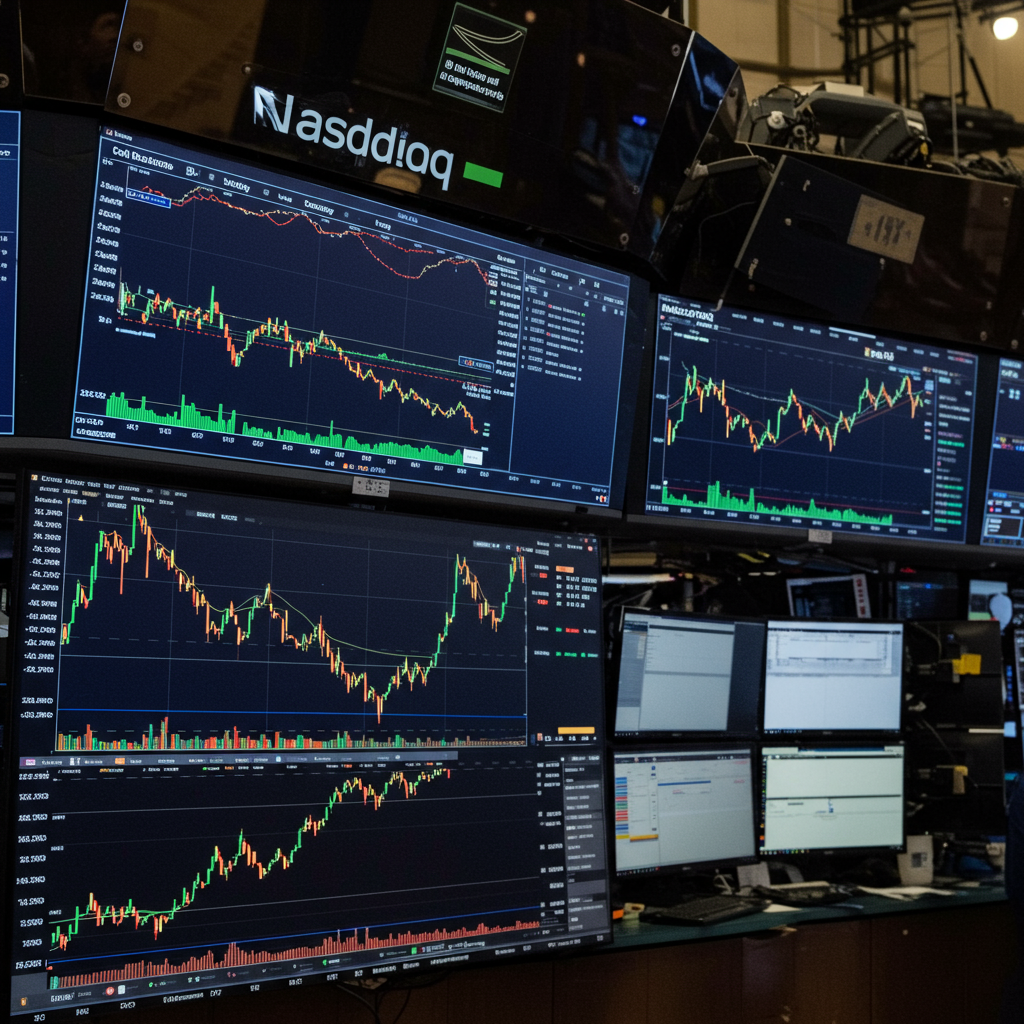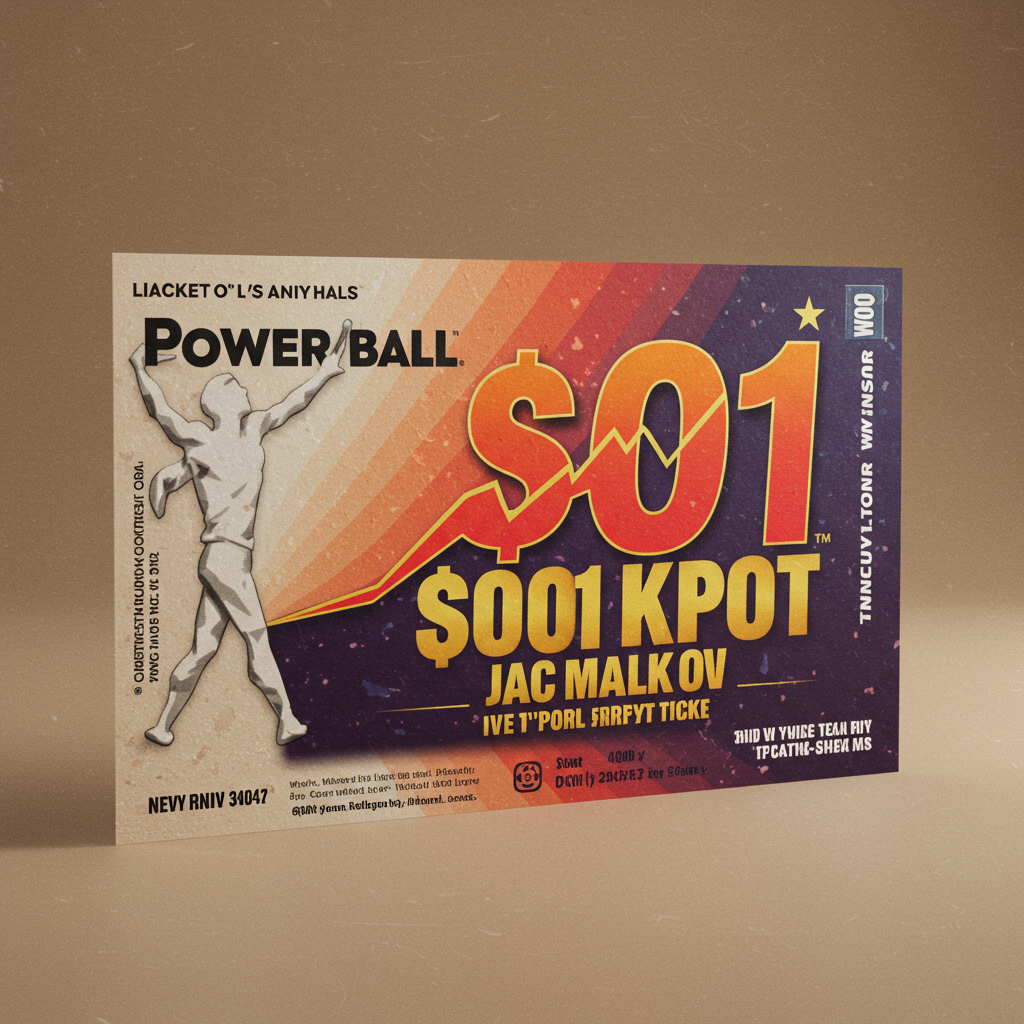Elon Musk has long painted a vivid picture of a future where millions of Tesla robotaxis roam city streets, generating significant revenue for the company. However, a recent limited public rollout of this ambitious driverless service in austin, Texas, appears to have hit significant roadblocks, raising serious questions about <a href="https://news.quantosei.com/2025/06/29/tesla-shows-off-its-first-fully-autonomous-delivery-to-convince-us-its-self-driving-cars-work-well/” title=”Tesla Self-Driving Car Delivers Itself: Real Breakthrough?”>tesla’s core technological approach and the timeline for achieving true autonomy. This stumbling launch drew immediate regulatory attention and starkly highlighted the gulf between Musk’s long-held vision and the complex reality of deploying self-driving technology safely and at scale.
Tesla’s Austin Robotaxi Launch: A Wobbly Start
The Austin pilot, which commenced on June 22, 2025, involved a small fleet of Tesla Model Y SUVs operating within a restricted geographical area. These vehicles included safety drivers in the passenger seats, did not operate in poor weather or certain nighttime hours, and offered rides for a symbolic $4.20 fee to a select group, primarily social media influencers and investors.
Initially, the launch generated positive buzz from pro-Tesla accounts, leading to Musk’s celebration and a temporary bump in the company’s stock price. However, the same videos shared by supporters soon revealed concerning incidents. Footage depicted self-driving cars struggling with fundamental tasks, including failing to make a proper left turn and entering a lane of oncoming traffic before correcting across a double yellow line. Other documented issues included vehicles potentially exceeding the speed limit, inexplicable braking, and dropping passengers in unsafe locations like the middle of an intersection.
By June 25, the National Highway Traffic Safety Administration (NHTSA) confirmed it was aware of the incidents and had initiated an investigation, requesting detailed information from Tesla about the rollout and the observed behaviors. Musk, conversely, continued promoting positive coverage and downplayed concerns, including retweeting a video of a robotaxi stopping for a peacock and urging followers to disregard media reports.
Technical Foundations Under Scrutiny
The struggles witnessed in Austin are seen by many as a direct consequence of Tesla’s controversial technical philosophy for autonomous driving. Unlike most industry players, Tesla relies almost exclusively on a “vision-only” system, using multiple external cameras and onboard processing to perceive and navigate the environment. This approach powers both its consumer-facing “Autopilot” and “Full Self-Driving” (FSD) features, as well as the robotaxi service.
This strategy stands in sharp contrast to competitors like Waymo and Zoox, which utilize a sensor suite commonly referred to as the “holy trinity” – combining cameras with active sensors such as radar (using radio waves) and lidar (using lasers). These additional sensors provide redundant environmental mapping, crucial for robust object detection, especially in challenging conditions like poor lighting, heavy rain, fog, or glare, which can significantly impair camera performance. A Bloomberg analysis highlighted this difference, noting that while a recent Waymo vehicle employs around 40 cameras and sensors, a Tesla FSD system uses about eight cameras.
The “Lidar is Lame” Debate
Elon Musk has been famously dismissive of lidar technology. In 2019, he declared lidar “lame,” “friggin’ stupid,” “expensive,” and “unnecessary” for self-driving cars. His argument centers partly on cost – lidar units can cost around $12,000 per vehicle, significantly more than cameras priced closer to $400. He also maintains that a camera-only system mimics human vision, arguing it’s the most natural way to approach autonomous navigation.
Critics and industry experts strongly disagree. They argue that relying solely on cameras creates fundamental safety gaps. Attorneys representing victims of crashes involving Tesla’s FSD system point to its documented limitations in adverse weather and lighting. A Washington Post analysis linked Tesla’s FSD technology to at least 736 crashes and 17 fatalities, with allegations often citing environmental factors as contributing causes. Government investigations and civil lawsuits against Tesla related to its FSD performance remain ongoing. As one attorney noted, experienced professionals in collision avoidance technology understand that the combination of radar, lidar, and cameras offers the most reliable path to full autonomy. The Austin incidents appear to underscore these long-standing technical criticisms.
Navigating Regulation and Competition
Beyond the technical debate, Tesla’s robotaxi deployment also faces significant regulatory and competitive hurdles. While Texas currently lacks a formal permitting process for fully autonomous vehicles (a framework is expected in September), the NHTSA’s quick move to investigate signals regulatory bodies are closely monitoring developments.
This contrasts with the methodical approach taken by rivals like Waymo. The Google subsidiary is widely considered the leader in commercially deployed autonomous ride-hailing in the U.S. Waymo’s strategy involves extensive, multi-year processes of mapping and testing within specific cities before launching fully driverless services to the public. For instance, Waymo spent years testing in San Francisco before its public launch in 2024. While Waymo has also encountered issues, including a recent recall and an NHTSA investigation into erratic driving reports, its operations are significantly more scaled and established than Tesla’s current pilot. Waymo operates over 1,500 vehicles across multiple cities, whereas Tesla’s Austin launch involved just 10-20 cars in a geofenced area.
Tesla’s relatively rapid Austin deployment, without publicized extensive prior mapping specific to the city, is reminiscent of Uber’s ill-fated 2016 self-driving pilot in San Francisco. That attempt was quickly shut down by California regulators after operating without a permit and experiencing immediate traffic violations. Tesla’s historical pattern of rushing to meet ambitious, often-deferred, public deadlines set by Musk for achieving full self-driving capability adds context to the perception of a potentially rushed Austin launch.
Robotaxis: The Cornerstone of Musk’s Vision
For years, Elon Musk has positioned autonomous driving, particularly robotaxis, as the key to unlocking Tesla’s true potential and justifying its high valuation. With EV sales facing challenges in key markets, Musk has explicitly told investors that Tesla’s future growth hinges less on traditional car sales and more on the success of its autonomous technology and humanoid robots (like Optimus). Analyst Dan Ives, cited in reports, suggested this vision could drive Tesla’s market cap to $2 trillion by 2026, based on Musk’s projections.
This strategic shift underscores why the robotaxi launch, however limited, is so important to Tesla. Musk recently highlighted further progress by announcing a Model Y completed an autonomous delivery from a Texas factory to a customer, reportedly without anyone inside or remote operation. This event, occurring just ahead of a personal deadline Musk had set, demonstrates Tesla’s ongoing push to showcase its AI capabilities. However, questions remain about the practical scalability and operational significance of such feats compared to establishing a reliable, widespread commercial robotaxi service. Experts note that even achieving a fleet of 10,000 robotaxis, while a significant step, might generate limited revenue compared to the scale needed to dramatically impact Tesla’s valuation based solely on autonomous services.
The Path Ahead: Challenges and Uncertainty
The Austin robotaxi launch, while a step towards Musk’s long-promised future, simultaneously exposed significant technical, regulatory, and competitive hurdles. Tesla’s insistence on a camera-only system faces persistent questions regarding safety and reliability in diverse real-world conditions. Regulatory bodies, alerted by the Austin incidents and past FSD performance, are increasing their scrutiny. Competitors utilizing multi-sensor approaches and methodical deployment strategies appear significantly ahead in achieving scalable, commercially operational driverless services.
Furthermore, reports suggest the Austin vehicles, despite the “self-driving” label, may still rely on human “tele operators” who remotely monitor and can take control – a capability closer to remote-controlled cars than fully autonomous systems. This reliance highlights that the technology powering Tesla’s robotaxi vision may still be in a more nascent stage than publicly portrayed. While Tesla has achieved remarkable growth since its IPO 15 years ago, largely driven by EV sales and regulatory credits, its ability to deliver on the highly ambitious robotaxi future Musk envisions remains unproven and is viewed cautiously by many analysts, especially given the pattern of delayed timelines and the technical challenges underscored by recent events. The coming months will be critical in determining if Tesla can overcome these obstacles and bridge the gap between vision and reality.
Frequently Asked Questions
Why is Tesla’s approach to self-driving different from competitors like Waymo?
Tesla primarily uses a “vision-only” system, relying solely on external cameras and AI to perceive the environment, similar to how humans use their eyes. In contrast, competitors like Waymo employ a multi-sensor approach, combining cameras with radar and lidar. These additional sensors provide redundant data and are particularly effective for detecting objects in challenging conditions like bad weather or poor lighting, where cameras may struggle. Tesla CEO Elon Musk has argued this camera-only method is more “human” and avoids the high cost of lidar sensors.
What regulatory challenges does Tesla’s robotaxi service face?
The recent Austin launch triggered an investigation by the National Highway Traffic Safety Administration (NHTSA) due to reported incidents of erratic driving. Regulatory environments vary significantly. While Texas is still developing its framework for autonomous vehicles, requiring compliance with safety protocols like remote monitoring during testing phases, states like California have rigorous multi-year testing and reporting requirements that competitors have navigated. Furthermore, potential future global expansion faces hurdles like the EU’s 2025 Autonomous Vehicle Directive, which introduces strict liability rules and certification needs.
How does the recent Austin robotaxi launch impact Tesla’s overall vision?
The limited Austin launch is a tangible step towards Elon Musk’s long-promised robotaxi future, which he positions as crucial for Tesla’s growth and valuation, especially amid slowing EV sales. However, the rollout’s struggles and subsequent regulatory scrutiny highlight that significant technical challenges, particularly with the camera-only system, persist. It underscores that achieving a scaled, reliable, and profitable autonomous service is likely still years away, potentially tempering investor expectations that the robotaxi vision will rapidly materialize and transform Tesla’s business model in the near term.




